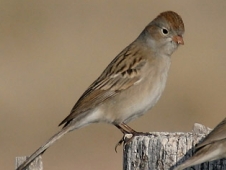
Worthen’s Sparrow has an extremely small and declining range and population in north-east Mexico, where its shrub-grassland habitat is threatened by agriculture and grazing. Climate change modelling shows that much of the remaining habitat may become unsuitable in just 50 years. Populations at the south-western edge of the species’s distribution may be the most viable in the long term.
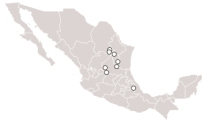
Worthen’s Sparrow Spizella wortheni is currently listed as Endangered because it has an extremely small and declining range and population in north-east Mexico, threatened by continued degradation of its open shrub-grassland habitat by agriculture and grazing. Climate change modelling shows that much of the remaining habitat may become unsuitable in just 50 years.
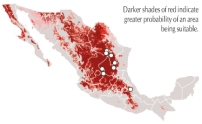
This was determined by modelling the relationship between known localities (Navarro-Sigüenza et al. 2002, 2003; see figure a) and various climatic variables to generate a predicted potential distribution (Peterson et al. 2002; figure b). This was then combined with global climate change models to generate a predicted potential distribution in 2055 (Peterson et al. 2001, 2002; figure c). The modelled distributions for present and future were brought together to determine areas that are suitable now and likely to remain so (figure d).
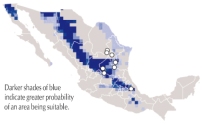
Many of the sites from which the species is currently known are predicted to become unsuitable in future due to climate change. Assuming that Worthen’s Sparrow has minimal dispersal ability, this analysis points to the populations at the south-western edge of the species’s distribution as the most viable in the long term.
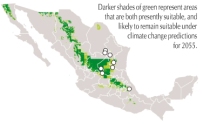
Related Species
References
Compiled: 2004 Copyright: 2004
Recommended Citation:
BirdLife International (2004)
Climate change may make habitats become unsuitable in large parts of the range of Worthen's Sparrow.
Downloaded from https://datazone.birdlife.org/sowb/casestudy/climate-change-may-make-habitats-become-unsuitable-in-large-parts-of-the-range-of-worthen's-sparrow on 22/12/2024